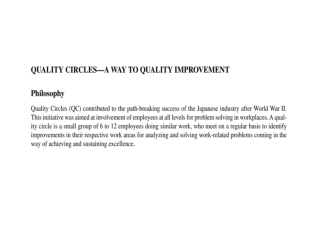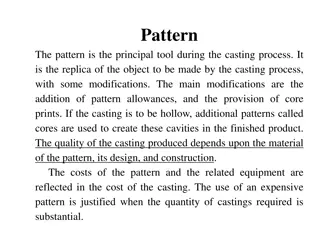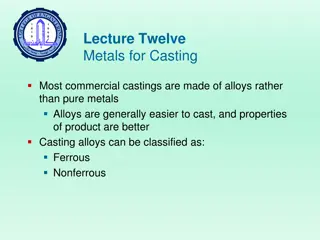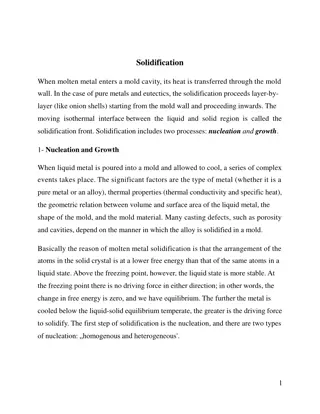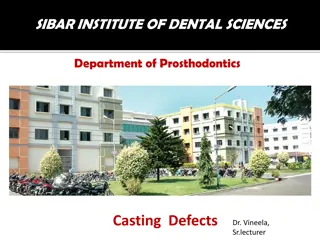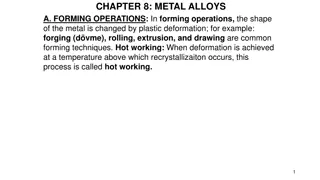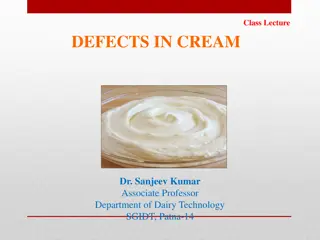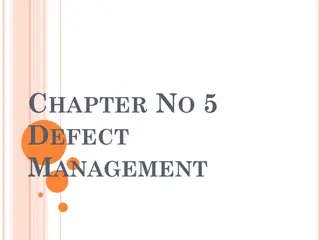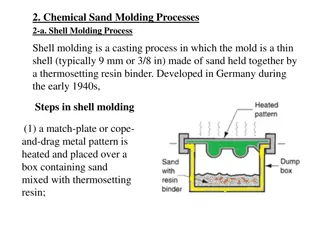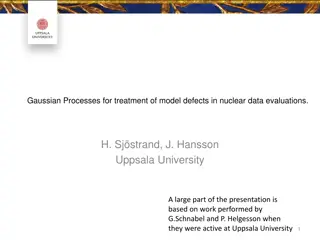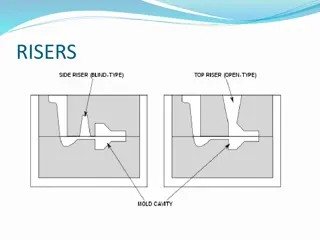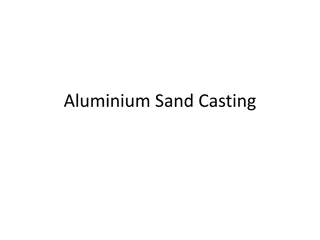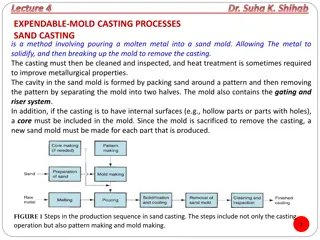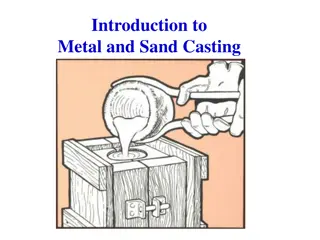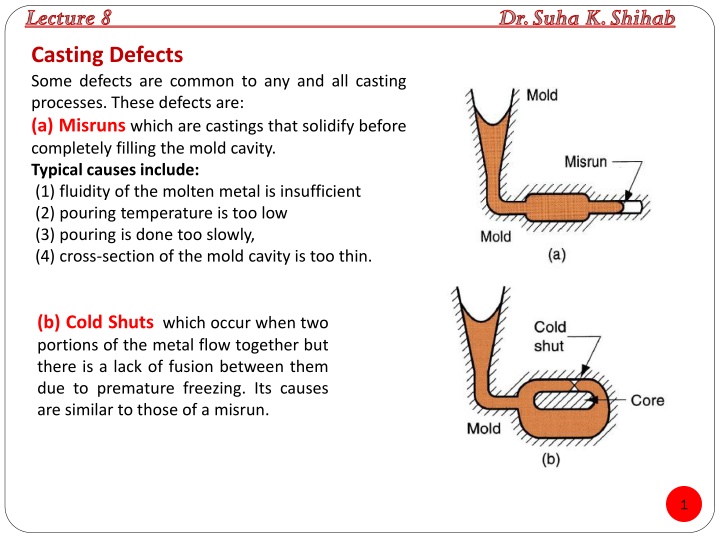
Common Casting Defects and Causes
Learn about common casting defects like misruns, cold shuts, cold shots, shrinkage cavities, microporosity, and hot tearing in casting processes. Understand their causes, prevention methods, and their impact on the final casting quality.
Download Presentation

Please find below an Image/Link to download the presentation.
The content on the website is provided AS IS for your information and personal use only. It may not be sold, licensed, or shared on other websites without obtaining consent from the author. If you encounter any issues during the download, it is possible that the publisher has removed the file from their server.
You are allowed to download the files provided on this website for personal or commercial use, subject to the condition that they are used lawfully. All files are the property of their respective owners.
The content on the website is provided AS IS for your information and personal use only. It may not be sold, licensed, or shared on other websites without obtaining consent from the author.
E N D
Presentation Transcript
Lecture 8 Dr. Suha K. Shihab Casting Defects Some defects are common to any and all casting processes. These defects are: (a) Misruns which are castings that solidify before completely filling the mold cavity. Typical causes include: (1) fluidity of the molten metal is insufficient (2) pouring temperature is too low (3) pouring is done too slowly, (4) cross-section of the mold cavity is too thin. (b) Cold Shuts which occur when two portions of the metal flow together but there is a lack of fusion between them due to premature freezing. Its causes are similar to those of a misrun. 1
Lecture 8 Dr. Suha K. Shihab (c) Cold shots result from splattering during pouring, causing the formation of solid globules of metal that become entrapped in the casting. Pouring procedures and gating system designs that avoid splattering can prevent this defect. (d) Shrinkage cavity is a depression in the surface or an internal void in the casting, caused by shrinkage that restricts the amount of molten available in the last region to freeze. It often occurs near the top of the casting, in which case it is referred to as a pipe. The problem can often be solved by proper riser design. solidification metal 2
Lecture 8 Dr. Suha K. Shihab (e) Microporosity consists of a network of small voids distributed throughout the casting caused by localized solidification shrinkage of the final molten metal in the dendritic structure. The defect is usually associated with alloys, because of the protracted manner in which freezing occurs in these metals. (f) Hot tearing, also called hot cracking occurs when the casting is restrained from contraction by an unyielding mold during the final stages of solidification or early stages of cooling after solidification. The defect is manifested as a separation of the metal (tearing and cracking) at a point of high tensile stress caused by the metal s inability to shrink naturally. In sand expendable-mold processes, it is prevented by compounding the mold to be collapsible. In permanent-mold processes, hot tearing is reduced by removing the part from the mold immediately after solidification. casting and other 3
Lecture 8 Dr. Suha K. Shihab Defects of Sand Casting : Some defects are related to the use of sand molds and therefore they occur only in sand castings as following : (a) Sand blow is a defect consisting of a balloon-shaped gas cavity caused by release of mold gases during pouring. It occurs at or below the casting surface near the top of the casting. Low permeability, poor venting, and high moisture content of the sand mold are the usual causes. (b) Pinholes caused by release of gases during pouring, consist of many small gas cavities formed at or slightly below the surface of the casting. 4
Lecture 8 Dr. Suha K. Shihab (c) Sand wash is an irregularity in the surface of the casting that results from erosion of the sand mold during pouring, and the contour of the erosion is formed in the surface of the final cast part. (d) Scabs are rough areas on the surface of the casting due to encrustations of sand and metal. It is caused by portions of the mold surface flaking off during solidification and becoming embedded in the casting surface. (e) Penetrationrefers to a surface defect that occurs when the fluidity of the liquid metal is high, and it penetrates into the sand mold or sand core. Upon freezing, the casting surface consists of a mixture of sand grains and metal. Harder packing of the sand mold helps to alleviate this condition. 5
Lecture 8 Dr. Suha K. Shihab (f) Mold shift refers to a defect caused by a sidewise displacement of the mold cope relative to the drag, the result of which is a step in the cast product at the parting line. (g) Core shift is similar to mold shift, but it is the core that is displacement is usually vertical. Core shift and mold shift are caused by buoyancy of the molten metal displaced, and the (h) Mold crack occurs when mold strength is insufficient, and a crack develops, into which liquid metal can seep to form a fin on the final casting. 6

